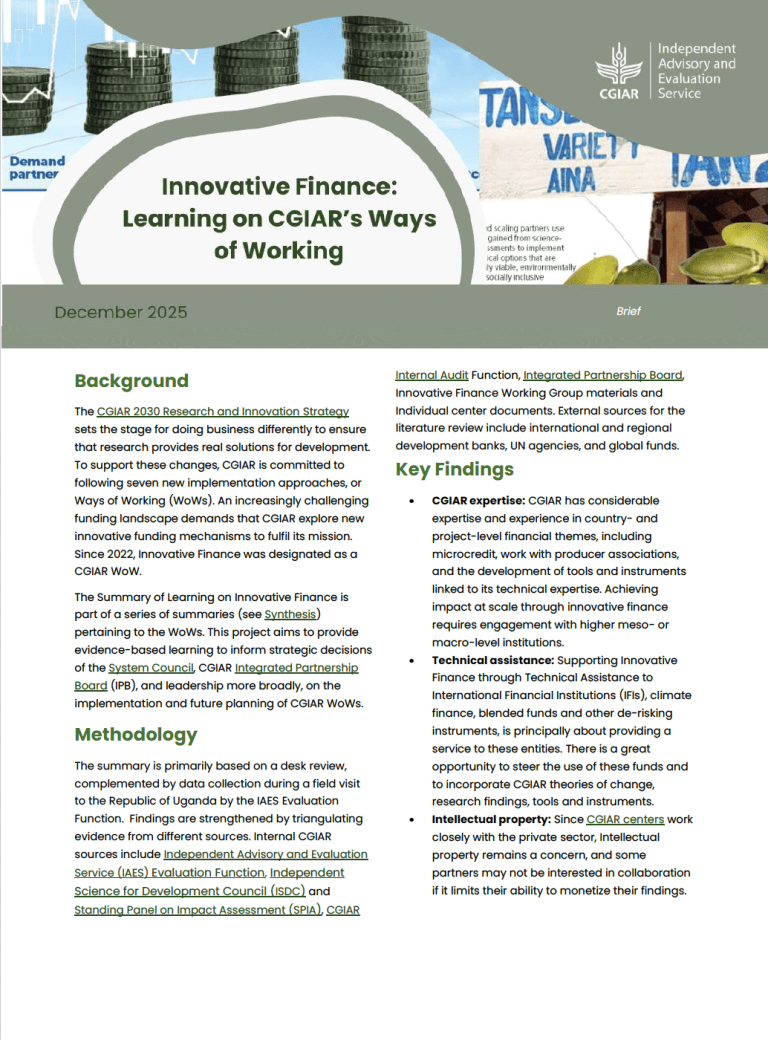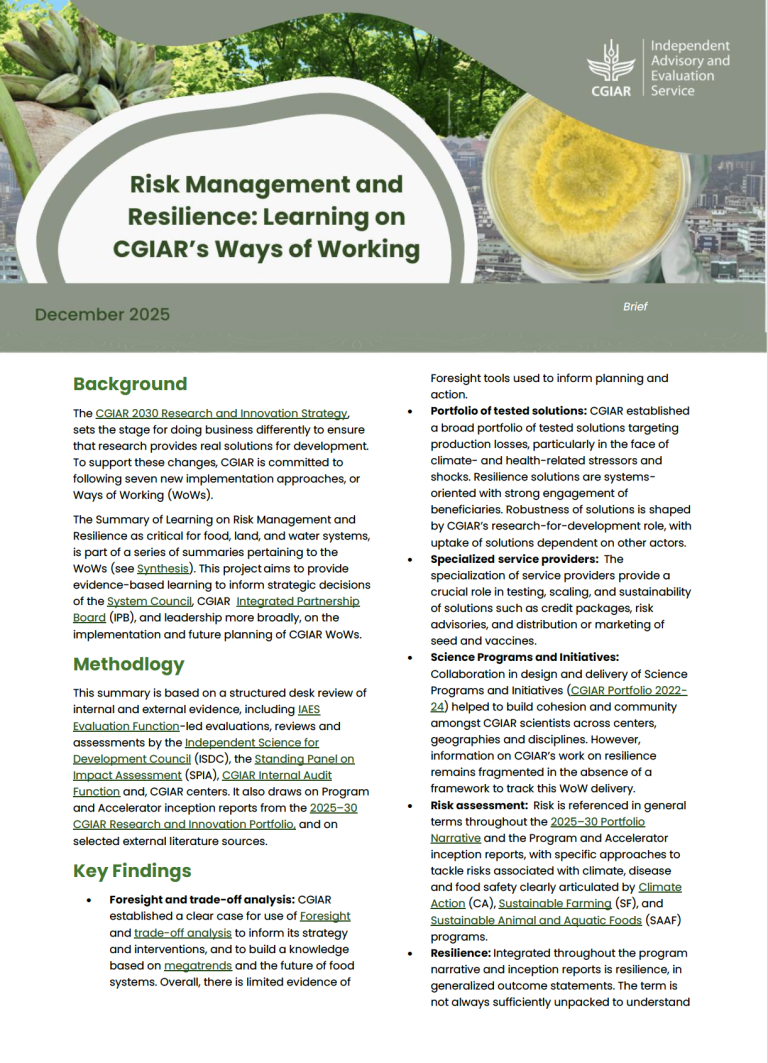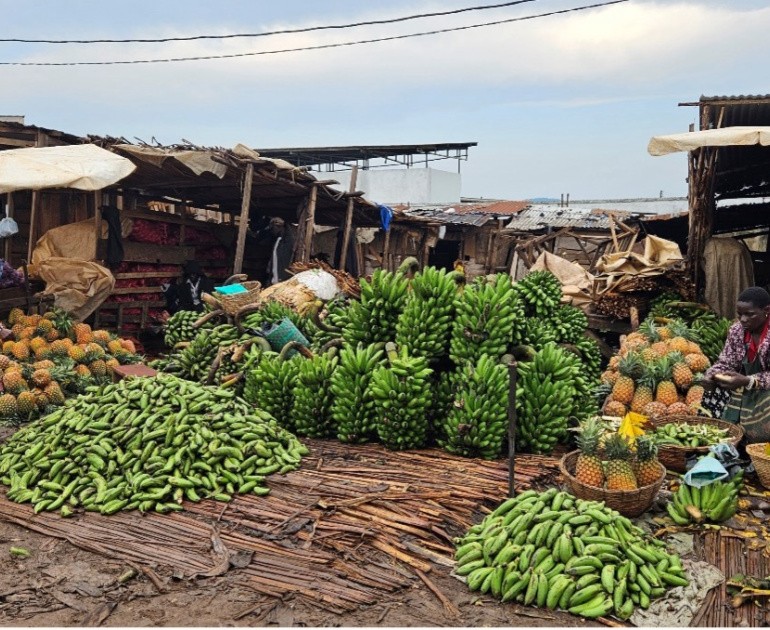Abstract
Background and Context
Policies, Institutions, and Markets (PIM) is one of four cross-cutting Global Integrating Programs within the CGIAR portfolio. PIM focuses its research and policy engagement on addressing the policy, institutional, and market constraints to sustainable and equitable economic development and rural transformation. PIM uses four main channels to address these constraints: global agenda setting, national policy support, program and market innovations, and capacity development. PIM projects are implemented in Africa South of the Sahara, South Asia, and selected countries in the Middle East and North Africa, East Asia, Southeast Asia, and Latin America. Led by the International Food Policy Research Institute (IFPRI), PIM brings together all CGIAR Centers and national, regional, and international partners. External managing partners include Royal Tropical Institute (KIT), Michigan State University, University of Oxford, Wageningen University, and World Vision International. The PIM budget for 2019 is estimated at US$56 million. Research activities are carried out through six flagship programs (FPs): FP1 – Technological Innovation and Sustainable Intensification; FP2 – Economywide Factors Affecting Agricultural Growth and Rural Transformation; FP3 – Inclusive and Efficient Value Chains; FP4 – Social Protection for Agriculture and Resilience; FP5 – Governance of Natural Resources; and FP6 – Cross-cutting Gender Research and Coordination.
Purpose and Approach of the Review
The CGIAR CAS Secretariat is conducting independent reviews of the 12 CGIAR Research Programs (CRPs), including PIM. The reviews will provide information on quality of science and effectiveness of each CRP. It covers part of Phase II, from 2017 to 2019, with a view to identifying lessons for future research modalities. The review questions are as follows: 1. To what extent does PIM deliver quality of science, based on its work from 2017 through 2019? 2. What outputs and outcomes have been achieved, and what is the importance of those identified results? 3. To what extent is the CRP positioned to be effective in the future, seen from the perspectives of scientists and of the end users of agricultural research? Data and information sources include PIM program documents and databases; 23 interviews with PIM leaders, donors, staff, and partners, plus 12 additional persons reached through 3 group interviews; files on staffing and financial resources; and annual reporting data related to the CGIAR common results reporting indicators (CRRIs), including outcome impact case reports (OICRs), and bibliometric and Altmetric studies of peer-reviewed journal articles. Seven OICRs were selected for 'deep dives', two each in Pakistan, the Philippines, and Ethiopia, and a global one on reducing violence against women. Details on data sources are provided in the report and annexes. Annex 2 provides further detail on the review methodology.
Download:
Citation
CAS Secretariat (CGIAR Advisory Services Shared Secretariat). (2020). CGIAR Research Program 2020 Reviews: Policies, Institutions, and Markets. Rome: CAS Secretariat Evaluation Function. https://cas.cgiar.org/
Author(s)
Paul G. H. Engel & Fatima Laanouni





